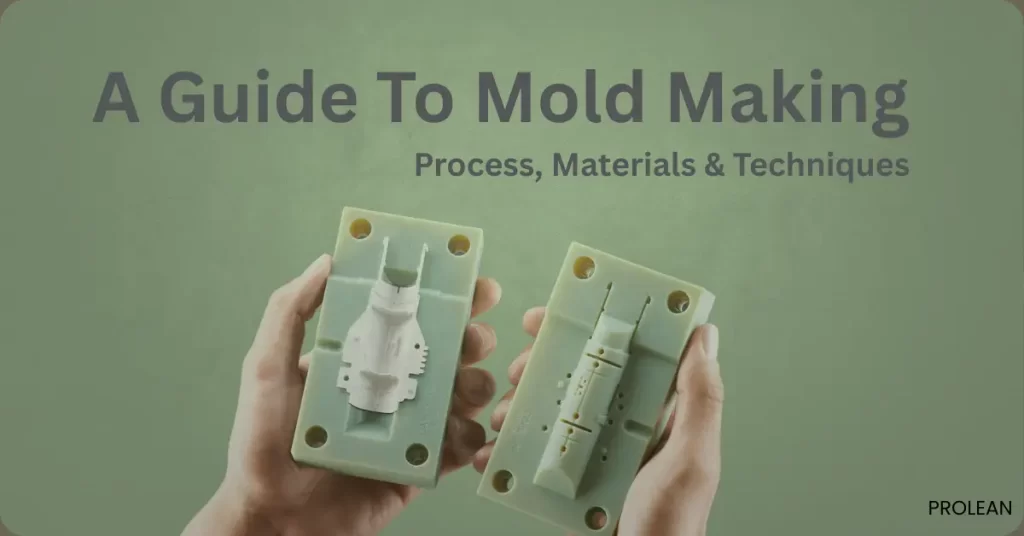
3D printed injection mold
Wanna know what mold making is and how it is done? Let’s start with an idea of why we need it firsthand. Suppose you have a fantastic product idea that has the potential to revolutionise the market, but there is a significant obstacle to its success. Even the most creative designs are stuck in sketches and prototypes without the proper manufacturing technique. They will never make it to the customers who need them the most.
In the meantime, your rivals with goods of lower quality are gaining market share by mastering mold fabrication, plastic mold manufacturing, and effective production techniques that transform ideas into reality.
Here, mold making turns into your go-to tool for turning your aspirations into real-life success stories. You can launch a new business or scale an existing one by understanding the art and science of mould technology.
What Is Mold Making and Why Does It Matter?
Mold making is the process of designing and creating molds used to form materials into specific shapes. Molds play a central role in producing consistent and repeatable results in all industries, from household to car parts.
Molds are used in packaging, automotive, aerospace, medical devices, and consumer electronics. For professional molds manufacturers, this step ensures that each manufactured product meets the exact design standards which are required. Skilled mold makers are therefore crucial for ensuring both quality and efficiency.
What Are Molds?
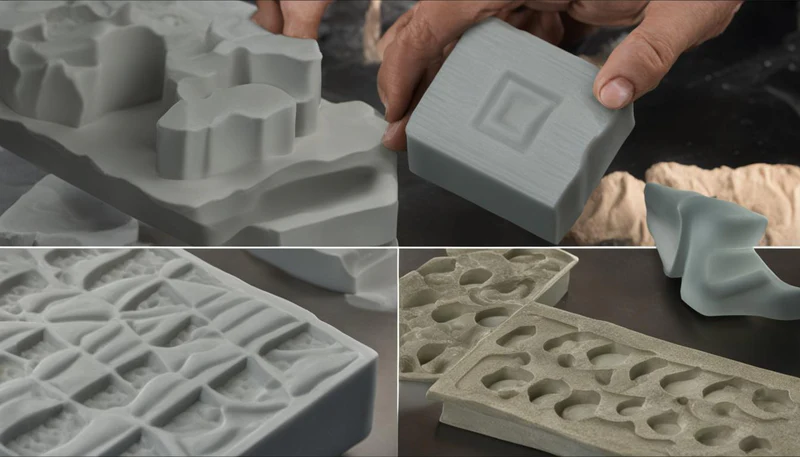
Silicone and Resin Molds
Molds are hollow forms into which different materials such as plastic, silicone, or metal are poured or injected. Once the material hardens, it takes the shape of the mold. This method results in precision and repeatability in mass production.
Types of Molds
Molds are available in a number of shapes and dimensions to fit different production processes and product designs. In the case of aluminum casting as an example, there are various molds such as sand mold, ceramic mold, and shell mold. For easier comprehension, the molds can be classified as follows:
One-Part Molds
The simplest form is that of a one-part mold. On one side, they are smooth, and they are best suited for designs with flat beads and simple shapes. Typically, such molds are produced from a physical master or, at least, from a CAD model. Easy to make and suitable for simple designs, Use of one-part moulds.
Two-Part Molds
For more complicated patterns, a two-section mold is required. They are composed of two components which are connected via a parting line. Each part tries to fixate on some characteristic of the object. Two-part molds can be used to cast a layer of material around an object, just like skin grows around a body.
Multi-Part Molds
Multi-part molds are employed for designs with intricate shapes. These molds are multi-piece, and each piece embodies a different aspect of the entire object. By combining all the parts, you can reproduce complex shapes that are impossible to make with single or double-part molds.
Multi-Cavity Molds
The mold has more than two cavities of the same product. This enables the insertion and sealing of a plurality of like parts simultaneously in a single production cycle, resulting in improved throughput of production.
Table: Comparison of Different Types of Mold
| Mold Type | Structure | Best For | Complexity Level | Key Advantage |
| One-Part Mold | Single-piece | Flat beads, simple shapes | Low | Easy to make, quick production |
| Two-Part Mold | Two pieces joined by a parting line | Moderate patterns, slightly complex designs | Medium | Can form around an object for better shape accuracy |
| Multi-Part Mold | Three or more pieces combined | Intricate, detailed shapes | High | Enables production of complex geometries |
| Multi-Cavity Mold | Multiple cavities in one mold | Mass production of identical parts | Medium to High | Produces many identical pieces in one cycle |
Classification of Molds by Reusability
Molds can also be classified based on how many times they can be used:
One-Time-Use or Sacrificial Molds
These are disposable molds. After the object is extracted, the mold is broken. Material for single-use molds includes sand, clay, silicone, wax, and some plastics.
Reusable or Permanent Molds
A reusable mold can repeat the process multiple times over many cycles. They are divided into:
Flexible Molds: These are made from silicone, plastics, or softer metals such as aluminium, and are used for small to medium production runs.
Hard Tools: Made from steel or other high-strength metal, suitable for mass production, and the product can take hundreds of thousands of cycles of mold life.
How is Mold Formed
If you’re wondering how to create a mold or even how to make a mold, the answer lies in selecting the right type of mold for your project needs.
Mold growth begins with a simple design that has some features. Engineers create intricate specifications with molding drawings that document every dimension, tolerance, and surface finish the end product needs. Using CAD (computer-aided design ) software, they carefully design the mold for the proper material flow, cooling channels, and ejection systems to ensure it functions effectively.
Materials are then selected based on the number of parts to be produced, what the final product is made out of, and how long the mold needs to last. Skilled machinists then build your mold on precision equipment and assemble all components. The molds are then tested prior to mass production, and only then will they have been made correctly.
Quality assurance is important at each step. This includes tests that look at how materials flow, how heat is distributed, and running prototypes. These measures during the molding steps help identify any problems before mass production starts. Correct mold design ensures that high-quality parts are produced on a repeatable basis, and it also boosts production.
Try Prolean Now!
Materials for Mold Making
The material a mold is made of has a big effect on cost, longevity, and how true to the original the new item is. The right material will ensure the longevity of your mold and quality parts.
Silicone for Flexible Casting
Silicone can be moved and handled quite easily, making it ideal for intricate and complicated shapes. It is typically used for prototypes and small production runs and for products in which appearance matters. Most professionals get molds from silicone mold manufacturers so that they can have good-quality molds in large quantities.
Metals for Durability and Precision
Steel and aluminum are the materials of choice for molds intended to last. Steel Molds are long-lasting and can handle stress. Aluminum molds are lighter and less expensive, making them suitable for prototype machining. Here is a tip: if you are considering the best one person metal mold design business, starting with aluminum molds can be a cost-effective way to enter the market.
Resins for Prototyping
Resins such as polyurethane or epoxy are sometimes used for rapid prototyping molds. They are inexpensive to form and allow designers to iterate quickly before investing in metal tooling for full-scale production
How to Choose a Mold-Making Technique
Selecting the appropriate mold-making process, however, involves several considerations such as the material of the part, manufacturing method, design of the part, and production quantity. The correct approach guarantees productivity, quality, and economy.
1. Outline the Development Criteria for Your Project
Start with a clear plan. Give a brief description of what the project entails, the timeline, and the budget. Decide whether you’re doing a one-off prototype manufacturing or cranking out thousands of parts. Key points to include are:
- Part design and size
- Material type
- Quality and tolerances
- Production volume
- Timeline and budget
In most cases, planning is based on a PRD (Product Requirements Document) and the BOM (Bill of Materials). Such documents are useful in defining the elements, materials, and performance criteria for the project.
2. Select the Manufacturing Process
The manufacturing process selected should be appropriate for your project requirements. Certain designs can be fabricated with more than one process; the challenge, however, is to choose one that can fulfil quality requirements in the most cost-effective way. Material selection and order quantity are generally paramount.
As an example, for a plastic product prototype, injection molding can be a better solution when making thousands of parts, and 3D printing is the right choice for low runs.
3. Select the Mold-Making Technique
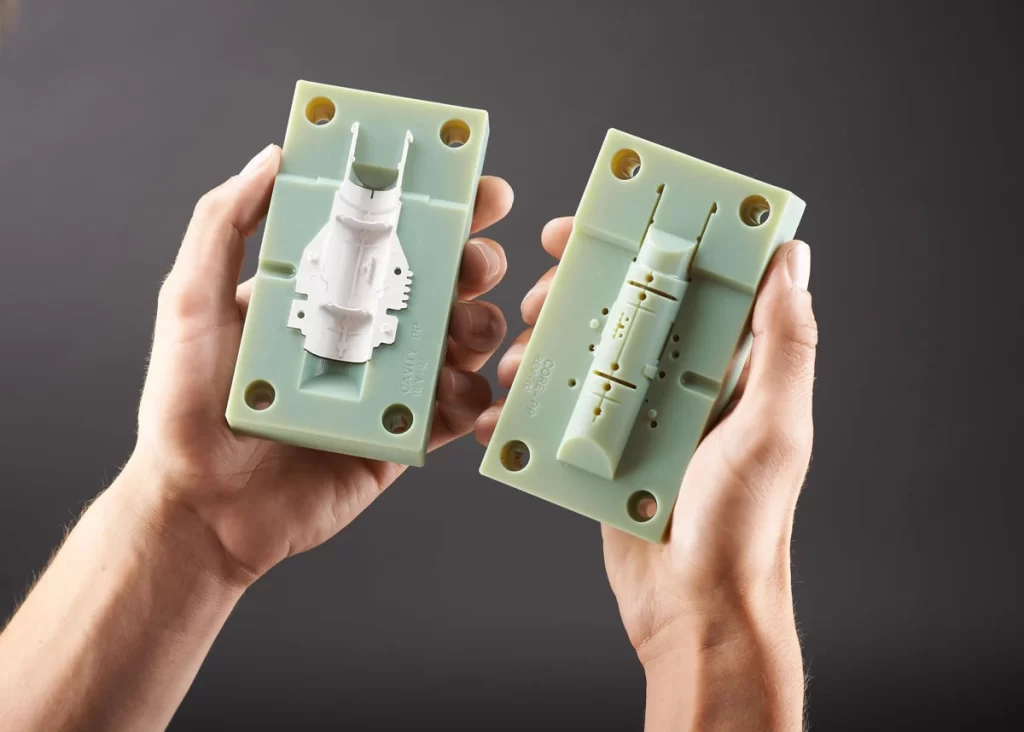
3D printed injection mold
Once the manufacturing process is chosen, the method of making the mold should be determined. Consider these key factors:
- Design of the Part: Manual molds or one-piece molds for simpler parts. More complex designs typically rely on multi-part molds that are produced through CNC machining or 3D printing.
- Production Volume: High-volume orders demand harder molds, which can withstand thousands of cycles. For small-volume runs, a soft or sacrificial tool may be economical, as these types of tools are often low-cost and quick to produce.
- Quality: Close tolerances demand accurate molds, frequently produced with the use of digital tools to guarantee repeatable results from cycle to cycle.
- Timeline: Complex metal molds can take months to produce. For shorter timelines, rapid tooling with 3D printing or soft molds may be a better option.
- Material: Harder or high-temperature materials require stronger molds that won’t wear out quickly.
How Molds Are Used in Different Manufacturing Methods
Many of the manufacturing processes include a step of mold making. A mold serves as a template that lets manufacturers create duplicates of items, again and again. Here are the primary processes that rely on molds:
Injection Molding
Injection molding is one of the most common ways to create plastic, silicone, or rubber parts. It’s quick, and easy to mass-produce. Its quite expensive for initial tooling but per-part cost is reduced when production is done on large scale. In this manner, the mold is installed on an injection molding machine. The mold is filled with hot raw material, commonly plastic. Also, try pulling this away from a table, and then when the finished part is cool and hard, it is removed, and the cycle starts again.
Thermoforming
In thermoforming, one heats a plastic sheet until it becomes soft. Shape the sheet so formed, and use a mold to give it a desired shape. The sheet may be drawn, formed, or vacuumed onto the mold, depending upon the process. It is mainly used to produce packaging and to make durable parts in many industries.
Casting
In casting, you pour hot metal, plastic, or silicone into a mold. The fluid cools and solidifies into the end product. Casting is very prevalent in metalworks, but is also used with plastics and silicone objects.
Compression
Generally, compression molding applies heat and pressure. A predetermined quantity of the warmed substance is located between two preheated molds that force it into its distinctive shape. It’s ideal for less complex designs and can be used for small and medium runs as an alternative to injection moulding.
Blow Molding
Blow moulding is similar to glass-blowing. Air is blasted into a molten plastic or glass tube, secured within a mold. As the air rushes into the tube, it fills out to the shape of the mold. This process is commonly employed for the production of hollow products, including bottles.
Composite lamination
Composite lamination entails layering substances such as carbon fiber, fiberglass, or Kevlar onto a mold. Composite parts having a high strength and a high ability of use are formed by methods such as wet lay-up, prepreg lamination, or resin transfer molding.
Try Prolean Now!
Creating Molds for Different Manufacturing Processes
Mold-making techniques depend on the type of manufacturing process and the final product requirements. Selecting the right approach ensures accuracy, efficiency, and durability of the molds, which directly affects the quality and cost of production.
Silicone Molds for Casting
Due to the flexibility and strength of Silicone, it is ideal for prototypes, low-volume production runs, or designs with the most complex forms and details. Silicone mold manufacturing would begin with a one-piece or two-piece mold, depending on your model. Two-piece molds are best for intricate, undercut shapes. It all starts with the master model, which may be a physical prototype or a 3D printed model. The mold is filled with liquid silicone and hardened. After the master is solid, the master is removed, and a new and reusable mold remains for casting additional parts in plastics, resins, or other compounds.
Injection Molds

Injection molding machine
Injection molds are generally constructed with a metal, such as steel or aluminum, processed by CNC machining or Electrical discharge machining. CAD model of the part is the beginning of the process, culminating in machined tooling with the mold cavity. Cooling tunnels and an ejection device are included for easy production. Once assembled, the mould is tested with small trials in order to check the quality and the operation of the mould. When it comes to rapid prototyping for low quantities or small production, 3D printed molds make an excellent alternative, providing faster turnaround and lower cost, all while still delivering repeatable, quality results.
Thermoforming Mold Fabrication
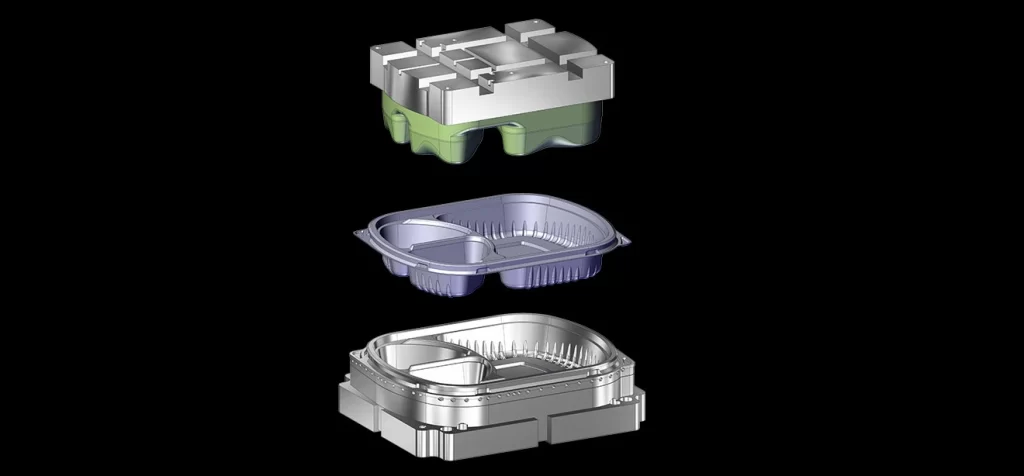
Thermoforming Mold
Thermoforming tools mold heated plastic sheets into the desired shape. These molds are typically made from materials such as aluminum, epoxy composites, wood (for prototypes), or 3D printed polymers. The choice of material depends on part complexity, production quantity, and cost.
Conventional mold-making techniques include hand carving and CNC milling. More recently, SLA 3D printing has been adopted to create high-detail prototypes and complex designs. Traditional processes can take months, while digital production methods significantly reduce lead time and allow for greater design flexibility and precision
Compression Molding Molds
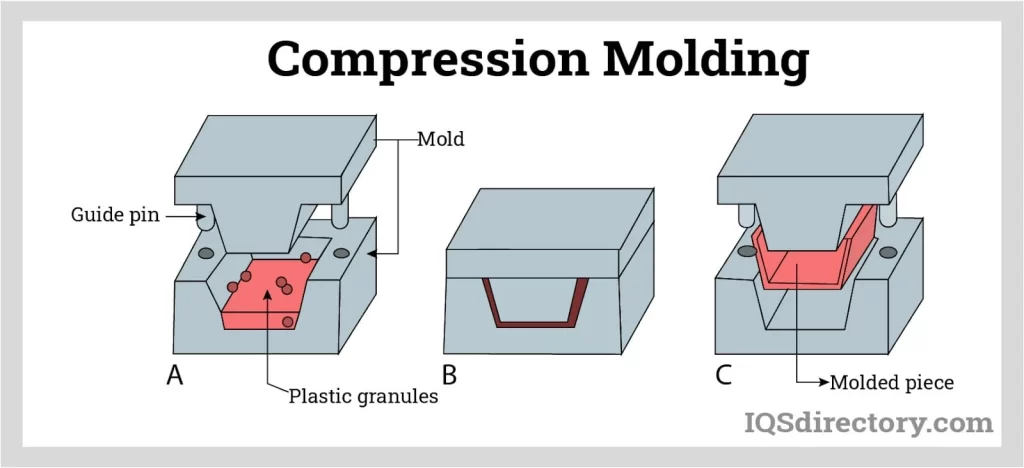
Process of Compression Molding
Compression molding needs molds that can withstand high temperature and pressure. The production of molds starts with choosing materials that can stand up to the conditions, and then molding them to the part design. Conventional manufacturing methods involve machining or casting, though 3D printing provides a more efficient and affordable solution for producing molds for compression molding. Once the mold is built, there are sample runs and runoffs to verify the mold’s efficiency and that high-quality parts are produced.
Metal Casting Mold Creation

Molds for Metal Casting
Metal casting uses molds to form metal parts through various techniques, including sand casting, die casting, and investment casting. In sand casting, a pattern is used to pack sand around it, creating a mold cavity once the pattern is removed. Die casting involves machining molds from metal for high-volume production, while investment casting uses wax patterns coated in ceramic to form precise molds. Both indirect methods, which start from a physical pattern, and direct methods, derived from digital designs, are used depending on the complexity of the design and production requirements.
Role of Rapid Prototyping in Mold Manufacturing
Rapid prototyping directly improves and impacts mold making, as the time to create and test molds has greatly reduced. This is important since it allows manufacturers to produce very accurate 3D models of molds before producing them, so they can minimize errors and costs. With rapid prototyping, engineers can also test part designs very quickly, check for fit and function, and implement improvements before waiting for conventional tooling setup. Rapid prototyping greatly reduces lead times and also produces better quality molds. Rapid prototyping services support advanced mold geometries through 3D printing techniques that are much more expensive or difficult to achieve through conventional means.
At Prolean Tech, we provide professional mold-making and manufacturing solutions for prototypes, small batches, and large-scale production. Learn more about injection molding, silicone molds, 3D-printed molds, and other custom solutions at our website. You can also contact our team to discuss your project and get expert guidance on the best mold-making approach for your needs.

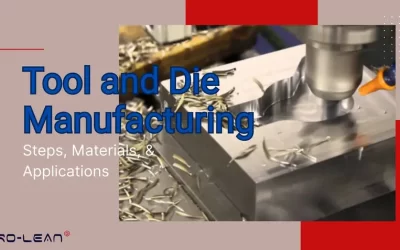
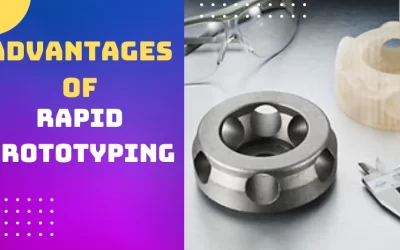

0 Comments